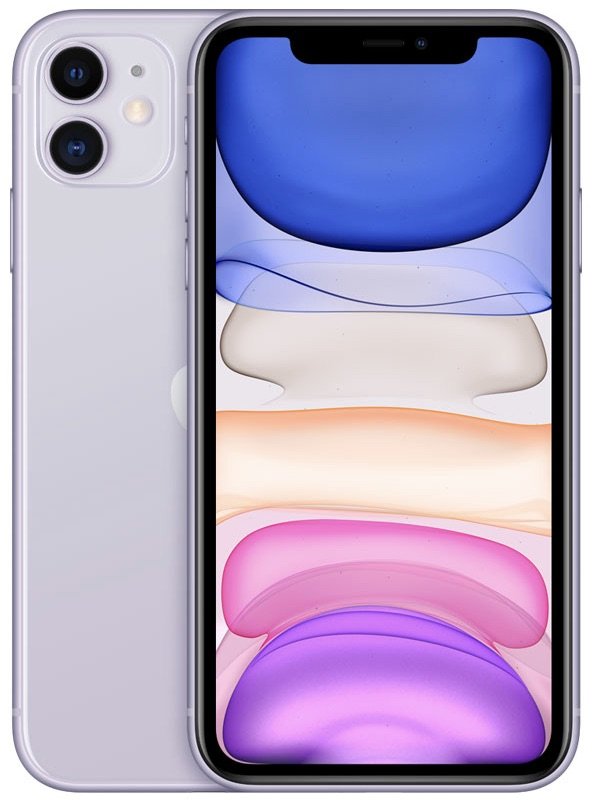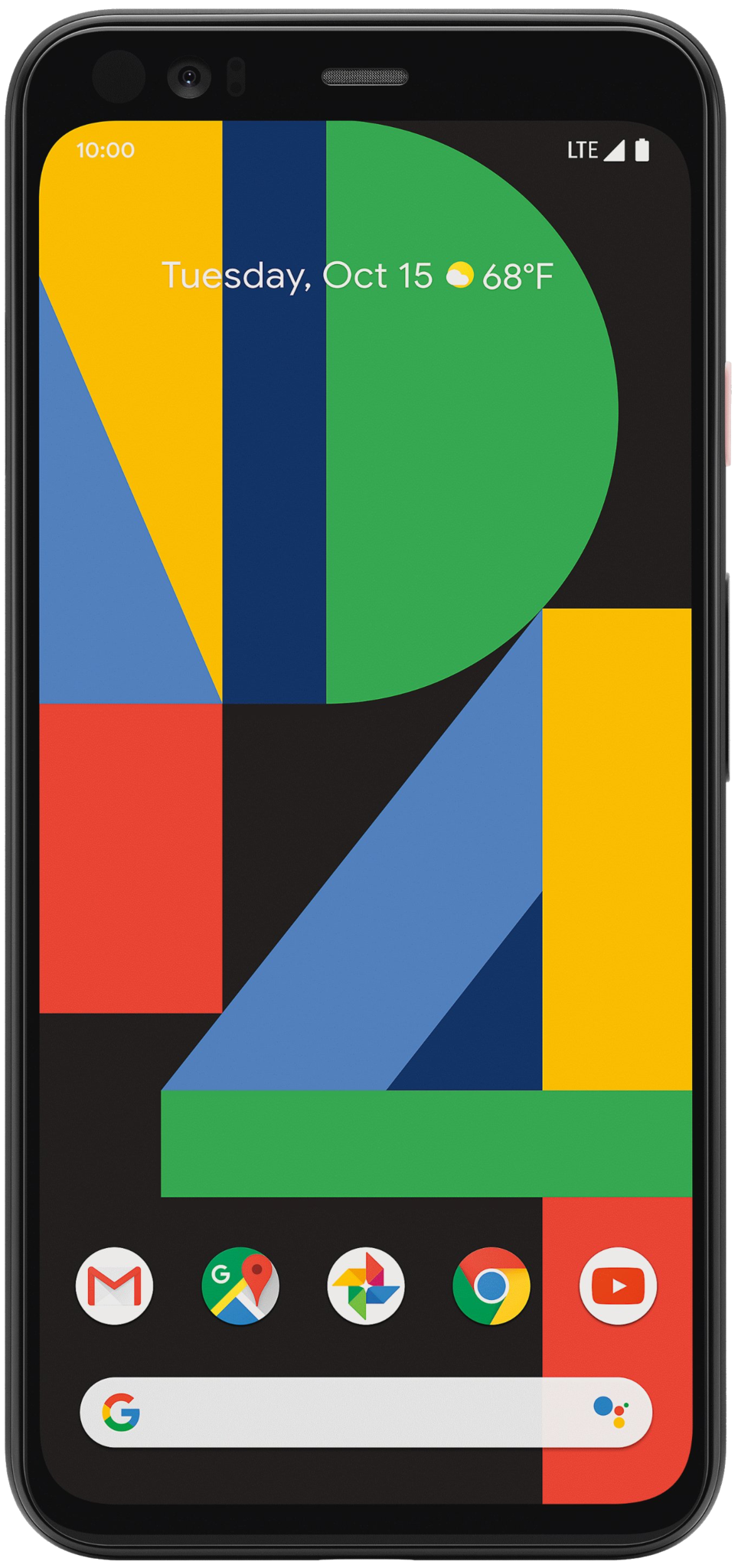Pixel 4 vs. iPhone 11: Which phone should you get?
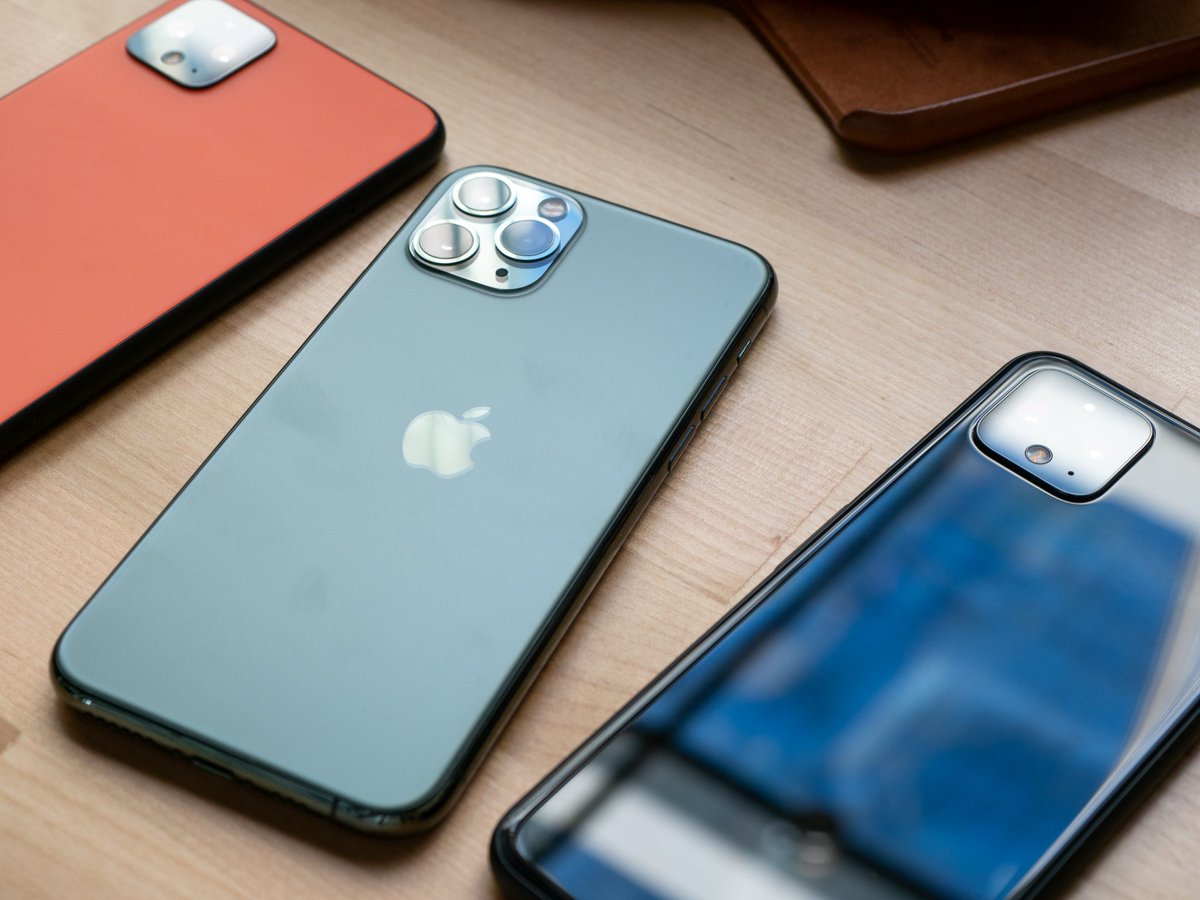
I've been using the regular-sized iPhone 11 Pro) in midnight green for a little over a month now. I've got a regular-sized Pixel 4 in orange on order today. Let me know what kinds of videos you want to see from me, but in the meantime, I'm going to give you my scorching hot take on how the two of them compare, not just in terms of specs, but philosophy.
Design & Display
The iPhone 11 has a notch, just like the iPhone X-style phones have had for the last few years now. They want to optimize for screen space, so they're taking those extra corners if they can get them. Apple's stuck with glossy glass on the 11 proper but textured now on the 11 Pro. It has a big honking bump, with two cameras on the 11, three on the Pro, color-matched to the glass color but with gloss and texture inverted. The result is what it usually is, a phone that's almost a singular object.

Pixel has a forehead, like some Pixels have had before, except for the one with last year's random notch. They're optimizing for clean lines and consistency between devices now. Google's gone from the two-tone to single tone and textured. And it also has a big honking bump, with two cameras, color-matched to the cameras. Which means black. The result is almost an iPhone-style singular object, but still with a playfully colored power button.
iPhone displays have consistently been great for years and the iPhone 11 LCD and iPhone 11 Pro OLED are no exceptions. They use Samsung's process, Apple's spec, calibration, and management, and they're some of the best in the business. They've also had TrueTone ambient color temperature matching for a while now. Basically, Apple wants consistency across the board. All color, just handled.
Pixel displays have faced more challenges. The Pixel 2 XL display was bad. Pixel 3 was much better. Pixel 4 is supposed to be excellent. Rumor has it they're also using Samsung's process now, but with their own color management, and so it's quite possible they're right up there as well. And they've just added Ambient EQ, which also matches color temperature. So, Google's now matching Apple in the color matching.
But, the Pixel displays now go up to 90hz with dynamic refresh rates, which isn't the 120hz of the iPad Pro line's ProMotion, but better than the still 60hz of the iPhone 11's… non-ProMotion.
Performance
The iPhone 11 has the Apple A13 Bionic system-on-a-chip, which I'm going to just come out and say is the best mobile silicon on the market today. And inserting the word mobile in there is becoming less and less necessary over time. Also, 4 GB of RAM. If benchmarks are your thing, it scores 1329 for single-core and 3411 multi-core on Geekbench 5.
iMore offers spot-on advice and guidance from our team of experts, with decades of Apple device experience to lean on. Learn more with iMore!
Apple believes in fully integrated features from the chip to the interface, so custom silicon is just an investment that keeps paying off. Combined with increased display efficiency and bigger batteries, 3,110 mAh for the iPhone 11, 3,046 mAh for the iPhone 11 Pro, and 3,969 mAh for the iPhone 11 Pro Max, it gives all of this year's iPhones real all-day battery life. You can also get up to 512 GB of storage, if you like to hoard all the bits.
The Pixel 4 uses Qualcomm's Snapdragon 855. Not the 855+, but it's probably not enough difference for anyone to really care about. After getting kicked in the 64-bit butt by the A7, Qualcomm has really started pushing again, and while I don't think they're in Apple's silicon league yet, they're finally catching up. Also, 6 GB of RAM, which is way up from the previous 4 GB and should make a big difference with Android.
I haven't seen any scores for the Pixel 4, but the 855 on the OnePlus 7 Pro tops out at 723 single and 2655 multi-core on Geekbench 5. So, even if Google works some magic, it's fair to say they're not getting close. And they have a history of performance degradation over time. Fingers crossed that's fixed. To make up for the lack of custom SoC, Google's working on custom co-processors. More on that in a minute. But, still, it necessitates a modular play.
The Pixel 4 has a 2800mAh battery and the Pixel 4 XL 3700mAh. Which, is kind of worrisome given Pixel's have never exactly been known for their battery life to begin with. In other words, if they last, they're going to have to prove it. Also, they top out at 128 GB on storage.
Security
By now, the iPhone's A-series Secure Enclave and Face ID facial geometry scanner are well known. Face ID debuted on the iPhone X and has been made faster with subsequent hardware and software updates, including on the iPhone 11. You can't, however, use it without having to swipe up on the lock screen to open.
The Pixel has Google's Titan security chip, and a new facial geometry scanner augmented by a MotionSense radar chip. And yes, there was a huge controversy surrounding how the data was obtained for the face scan, so factor that in as you will.
Much like Apple's new U1 spatial positioning chip in the iPhone 11, Google hasn't said much if anything about what the MotionSense killer feature will be. Apple is rumored to be shipping locator tags at some point. Until then, both are tech demos.
For now, it will pre-load the camera for Face unlock and you can use it without having to swipe up on the lock screen to open. In fact, you have to change a setting if you want the lock screen to linger, which makes the experience perceptively faster.
Camera
Apple went from a single wide-angle, or dual wide-angle and telephoto, to dual 12mp f/1.8 wide-angle and 12mp f/2.4 ultra wide-angle on the iPhone 11, with a third, 12pm f/2.0 telephoto on the iPhone 11 Pro. On the front, Apple still has a single selfie camera, but it's 12mp now with a 70º field of view. Basically, the iPhone 11 has good camera hardware and good compute.
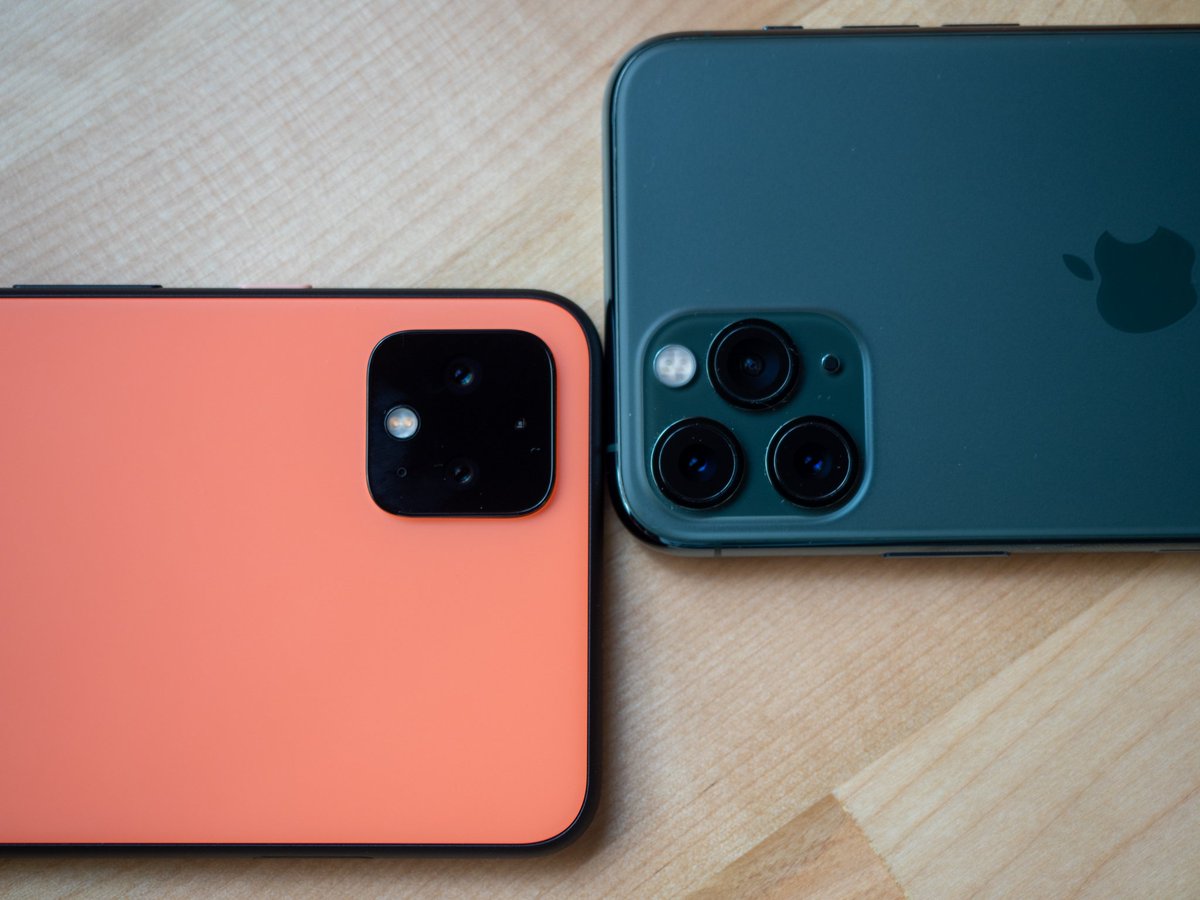
Pixel went from a single wide-angle to a dual 12mp f/1.7 wide-angle and 16mp f/2.4 telephoto on the Pixel 4. You can't computationally simulate ultra-wide, alas, since you're literally not capturing the extra data that ultra-wide would capture. On the front, Google went down from two to one selfie cameras, but it's now 8mp with a 90º field of view. Basically, the Pixel 4 has ho-hum camera hardware but excellent compute.
Apple has gotten better at fusion and semantics. Google at virtual lens modeling and depth data. Google's also, using a Pixel Neural Core, which finally — finally — gives them the processing power necessary to do live previews of all the computational photography. Something the iPhone has done since 2016. The Pixel is just crushing it on computational Super Zoom, though, which is an area Apple hasn't really focused on yet.
Both have computational high dynamic range, night mode, and astrophotography. Which you like better will come down more to subjective factors, namely, whether you prefer Apple or Google's color science and artistic choices. Apple has traditionally gone for a natural look and feel. That's led to warmer tones. Google feels like they want scientific accuracy, which has led to slightly cooler tones. Again, it's a matter of personal preference at this point.
Video is a different story. The iPhone still does 4K 60 fps but now with extended dynamic range. Even on the front-facing camera. The Pixel 4 is still tops out at 4K 30 fps.
There's a lot, lot more to both cameras, of course. I've just posted a huge iPhone 11 camera review and my colleagues at Android Central are no doubt working on the same for the Pixel 4.
Pricing
The iPhone 11 includes Lightning earbuds in the box but no 3.5mm adapter. The regular version starts at $699, the Pro at $999, and the Pro Max at $1099. And it's available pretty much everywhere.
The Pixel 4 has no earphones or adapters in the box. The regular version starts at $799 and the XL at $899. And it's got better U.S. carrier availability this time but, due to regulatory issues, won't be available in India when it goes on sale elsewhere on October 24.
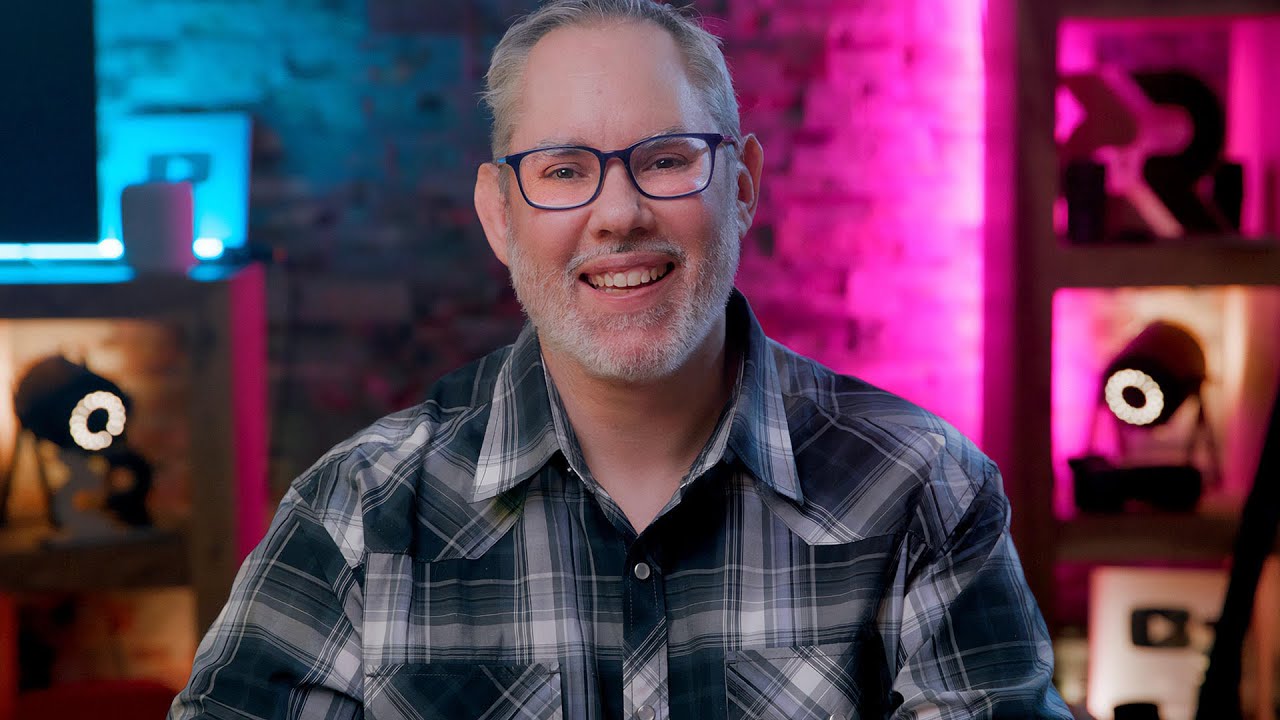
Rene Ritchie is one of the most respected Apple analysts in the business, reaching a combined audience of over 40 million readers a month. His YouTube channel, Vector, has over 90 thousand subscribers and 14 million views and his podcasts, including Debug, have been downloaded over 20 million times. He also regularly co-hosts MacBreak Weekly for the TWiT network and co-hosted CES Live! and Talk Mobile. Based in Montreal, Rene is a former director of product marketing, web developer, and graphic designer. He's authored several books and appeared on numerous television and radio segments to discuss Apple and the technology industry. When not working, he likes to cook, grapple, and spend time with his friends and family.
